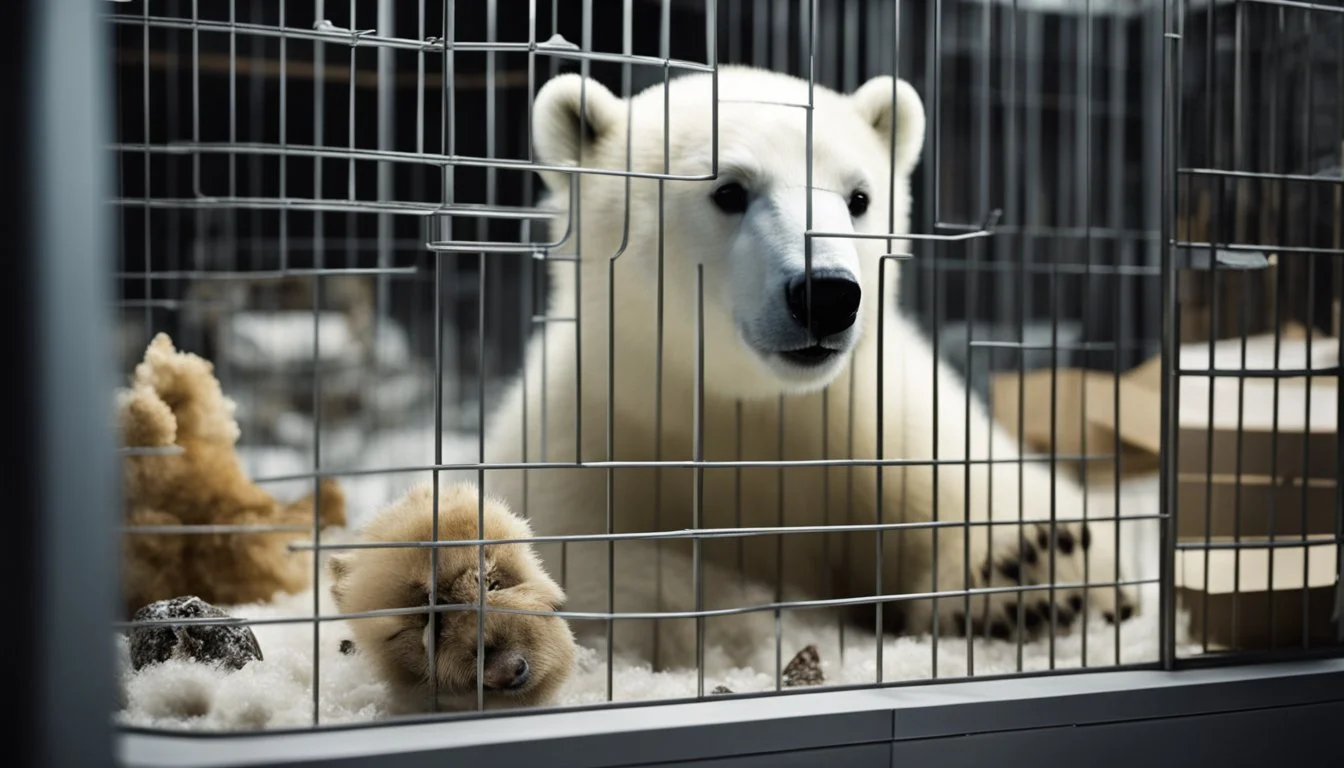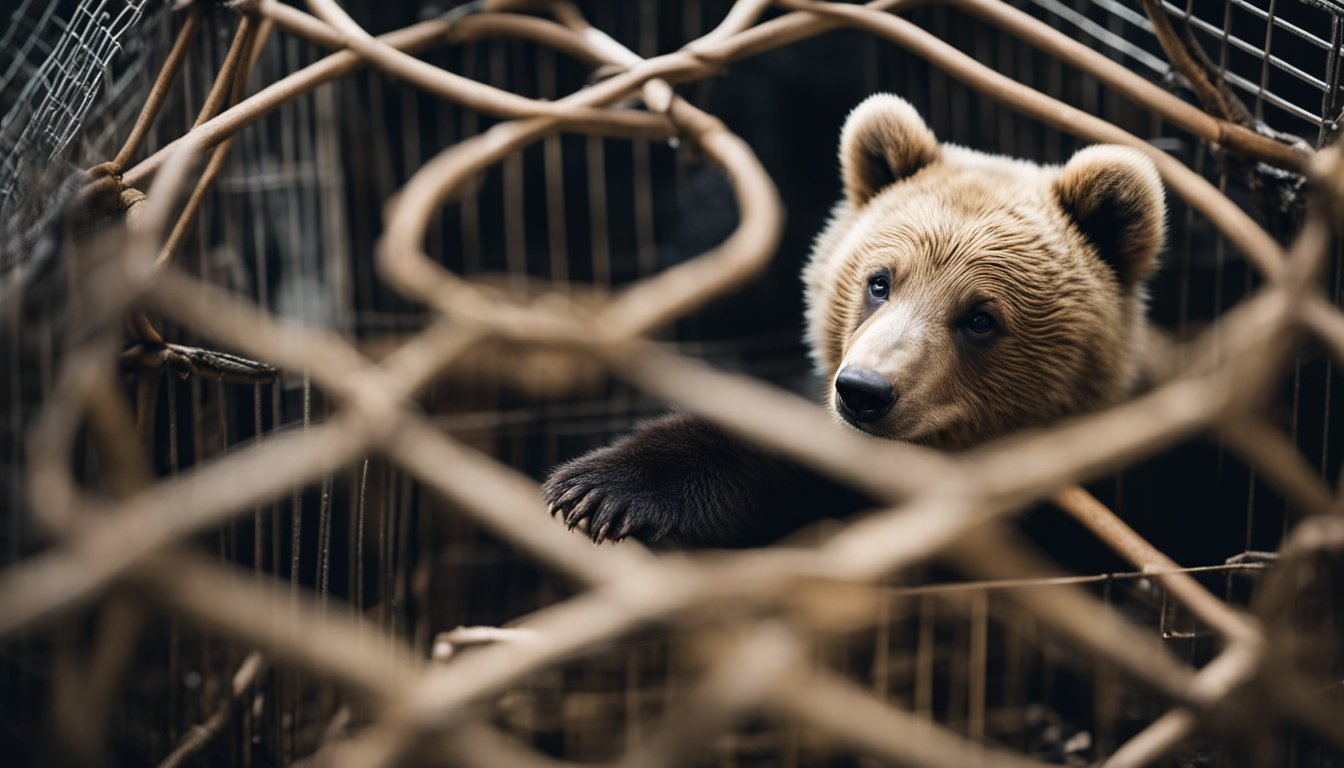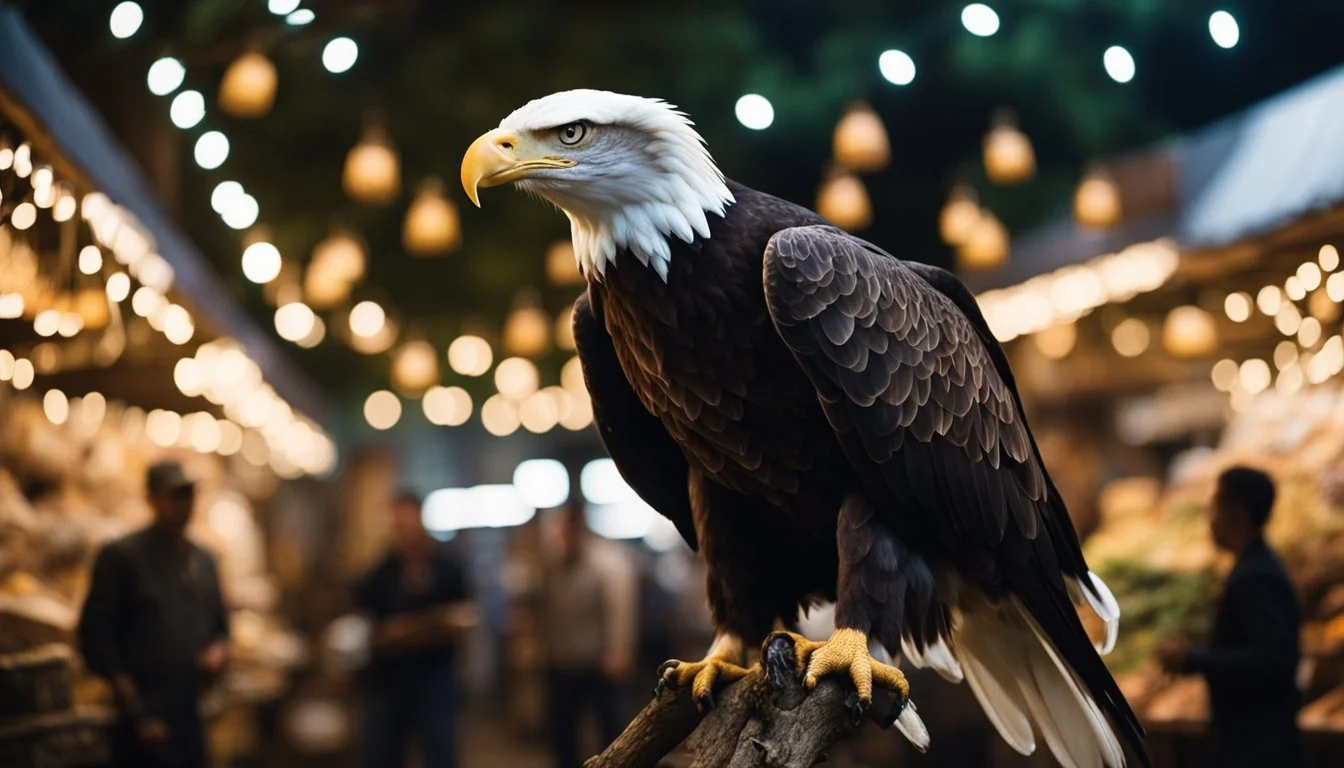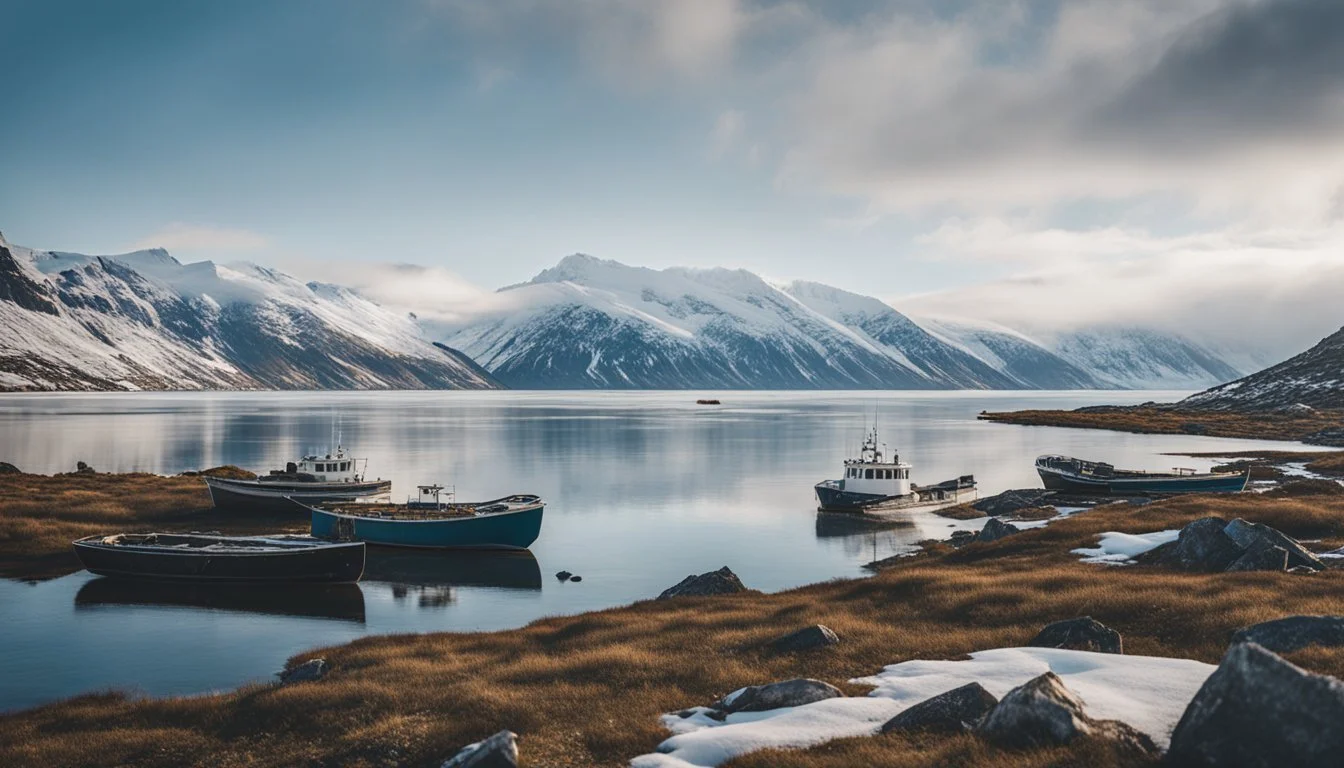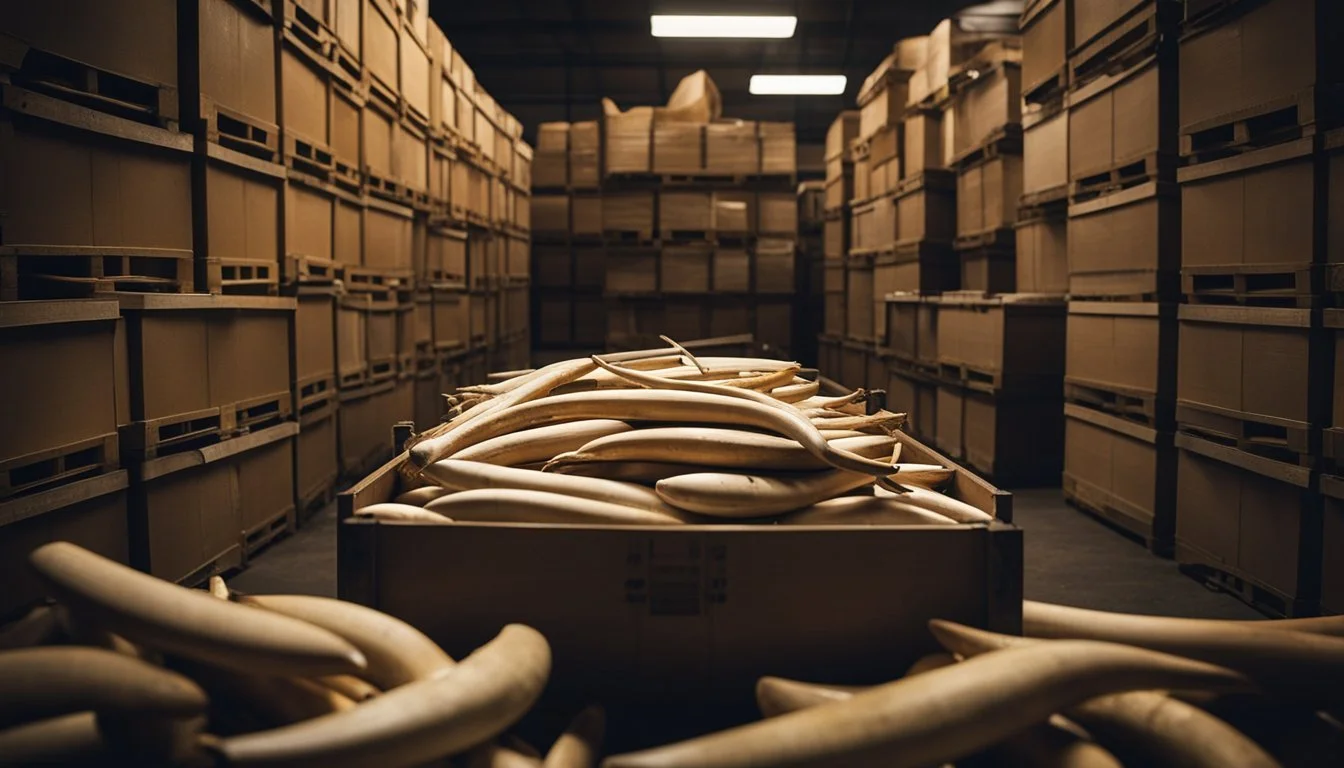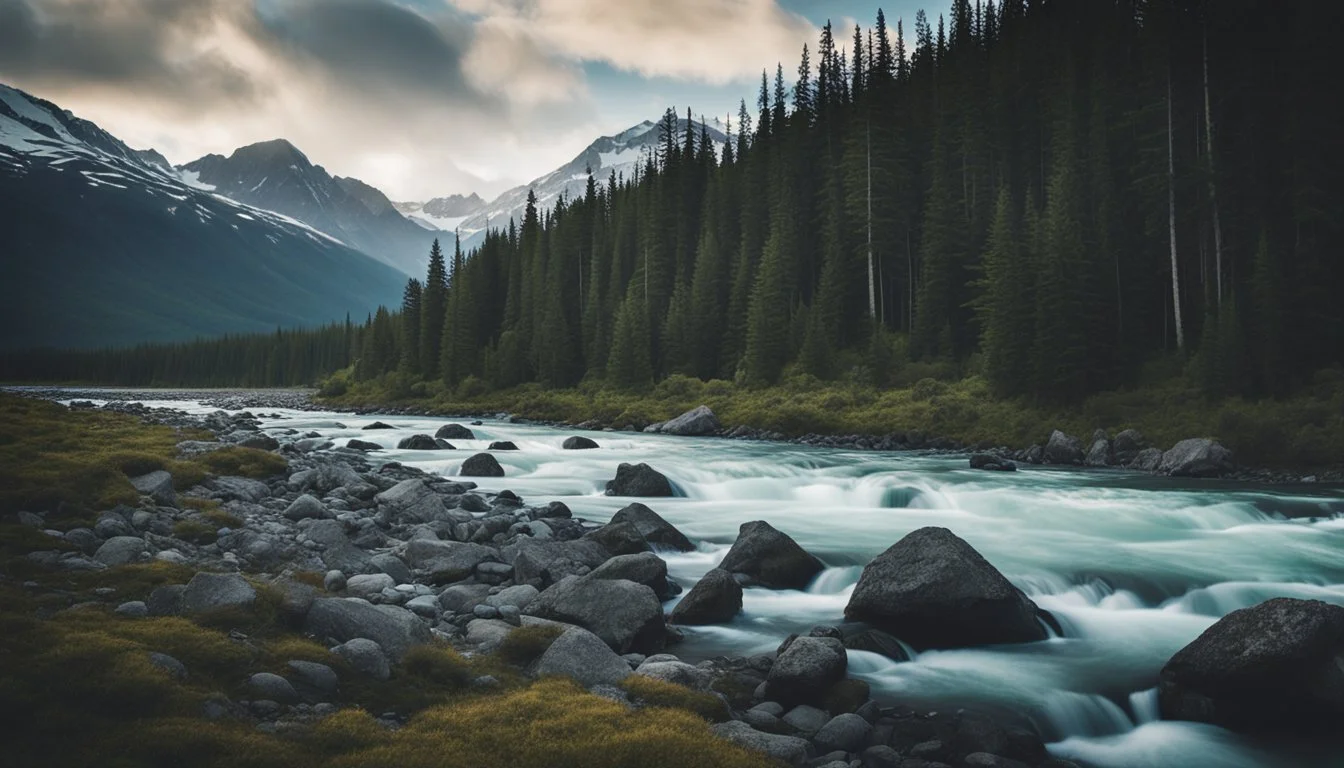8 True Crime Documentaries on Wildlife Trafficking in Alaska
Exposing the Dark Underbelly
Wildlife trafficking in Alaska is a compelling subject that intertwines elements of nature and crime. The state's vast wilderness and unique fauna make it a fertile ground for illegal activities that threaten both wildlife and ecosystems. This topic is explored in numerous documentaries that shed light on the methods and impacts of this illicit trade.
These documentaries reveal the intricate connections between organized crime and environmental degradation, showcasing the efforts made to combat this pressing issue. Each film provides a unique perspective on the complex dynamics involved, from the poachers' techniques to the legal measures taken to protect Alaska's wildlife.
1) The Bear Trade: Alaska's Hidden Crisis
The illegal bear trade remains a significant, underreported issue in Alaska. Bears are poached for their gallbladders and claws, which are highly valued in traditional medicine and for ornamental purposes. Poachers exploit remote wilderness areas, making enforcement challenging and contributing to the threat against bear populations.
Alaska's vast and rugged terrain provides ample hiding places for illegal activities. The bear trade often takes place in isolated regions, where monitoring is difficult. Consequently, poachers can operate with relative impunity, causing significant damage to local wildlife populations.
Wildlife trafficking disrupts ecosystems and depletes bear numbers, affecting biodiversity. Efforts to combat this issue involve both federal and state agencies, but resource constraints impede their ability to effectively address the problem. Public awareness and international cooperation are crucial to tackle the bear trade.
Documentaries exposing these issues offer vital insights into the challenges faced by conservationists. For more information on related topics, see Nefarious: Merchant of Souls (2011).
These films play a critical role in educating the public and lawmakers about the impacts of the illegal wildlife trade. Effective solutions require robust legal frameworks and dedicated efforts from both local communities and global partners.
2) Alaskan Wildlife: Smuggled and Sold
Illegal wildlife trafficking in Alaska is a pressing issue that highlights the dark side of the state's rich biodiversity. Various species, from fish to large mammals, are targeted. Investigative documentaries offer an in-depth look into these nefarious activities.
One of the key documentaries is "Chasing the Thunder" (2018). This film captures the efforts to curb illegal fishing practices, including those affecting Alaska's waters. It dives into the complexities of wildlife smuggling and enforcement. IMDB
"Alaska's Deadly Dozen" (2020) by Tom Brennan doesn't focus exclusively on wildlife, but it significantly covers crimes linked to animal trafficking. With real-life stories, it reveals the networks that exploit Alaska's natural resources. IMDB
"Wildlife Wars: Alaska" (2016) details the challenges faced by authorities in combating wildlife crime. The documentary provides a vivid portrayal of poaching and illegal trade operations targeting Alaska’s fauna. IMDB
"America's Arctic" (2017) narrates the tale of global demand for rare Alaskan species. It looks into how these smuggled animals end up in foreign markets, affecting biodiversity. IMDB
Lastly, National Geographic's special "Alaska Wildlife Rescue" (2019) showcases rescue efforts. It emphasizes the impact of trafficking on animal populations and the environment. IMDB
3) Trafficked: Moose in the Crossfire (2020)
"Trafficked: Moose in the Crossfire" dives into the harrowing world of moose poaching in Alaska. The documentary, released in 2020, focuses on the illegal hunting and trade of moose, a species vital to the region’s ecological balance.
The film presents real-life accounts from law enforcement, local communities, and wildlife activists. They reveal the complexities and dangers of combating moose poaching. Viewers get an intimate look at the efforts to protect these majestic animals.
It also highlights the impact of moose trafficking on the local ecosystem and economy. The illegal trade disrupts natural populations, leading to far-reaching consequences for Alaska's wildlife and people.
For more information on this documentary, visit the IMDB page.
4) Eagle Down: The Illicit Market
"Eagle Down: The Illicit Market" (2022) delves into the dark underbelly of wildlife trafficking in Alaska, focusing primarily on the illegal trade of eagle feathers and body parts. The film provides a detailed look at how these majestic birds fall victim to poachers and traffickers, driven by high demand in black markets.
The documentary begins by showcasing the cultural and spiritual significance of eagle feathers in certain communities. It then contrasts this reverence with the devastating impacts of illicit trade, including the dramatic decline in eagle populations.
Through covert footage and interviews with law enforcement, the filmmakers expose the methods used by traffickers to capture and transport eagles. The documentary also highlights efforts by authorities to curb this illegal activity and protect the remaining eagle populations.
By presenting real-life cases and investigations, "Eagle Down: The Illicit Market" provides a sobering view of how wildlife crime operates in Alaska. The film not only enlightens viewers about the ongoing threats to eagles but also calls for stronger legislative measures and public awareness to combat this illegal trade.
For more information on "Eagle Down: The Illicit Market," visit the IMDb page here.
5) Black Market Beavers: The Dark Side
Beavers, known for their industrious nature, are not immune to the black market. These creatures are targeted for their fur and glands, which are used in perfumes and traditional remedies. The demand for beaver products has led to a surge in illegal trapping activities.
In Alaska, where beaver populations are relatively healthy, poachers exploit their abundance. They hunt these animals aggressively, often during seasons when they are most vulnerable. This illegal activity can disrupt local ecosystems, as beavers play a crucial role in maintaining water quality and habitats for other species.
The black market for beavers also finds its way online. Platforms that should be policing this activity are instead hotspots for illegal transactions. This makes it difficult for authorities to track and prevent these illicit activities. As a result, the burden falls on wildlife enforcement agencies to combat this growing threat.
Documentaries highlight these issues, bringing much-needed attention to the plight of beavers caught in the black market. They reveal the complexities and dangers involved in trafficking wildlife and show the urgent need for stricter regulations and enforcement.
Learn more about beavers and their role in the ecosystem
6) Frozen Smugglers: The Seal Poachers
This documentary uncovers the dark world of seal poaching in Alaska. Seal populations face significant threats due to illegal hunting driven by the demand for their pelts.
Poachers operate under extreme conditions, evading law enforcement in remote areas. The film provides an intimate look at both the poachers' operations and the efforts of wildlife protection agencies.
It highlights the struggles of indigenous communities who rely on seals for traditional practices. The illegal trade not only depletes seal populations but also disrupts cultural practices.
Legal ramifications for poaching are severe, yet enforcement remains challenging. The documentary delves into the legal battles faced by convicted poachers and showcases the dedication of those fighting to protect Alaska's seals.
Frozen Smugglers: The Seal Poachers (2015) sheds light on a lesser-known aspect of wildlife trafficking. More information.
7) Illicit Ivory: Walrus Tusk Trafficking
Wildlife trafficking in Alaska includes the illegal trade of walrus ivory. One notorious case involves Walter Earl, an Anchorage businessman. He was convicted for illegally trafficking in walrus ivory. Investigations revealed that he violated the Lacey Act by purchasing and selling walrus ivory head mounts, which are the skulls and tusks of walruses.
Earl's activities spanned several years. He was caught by undercover agents who posed as buyers. This case highlights the challenges faced by law enforcement in combating wildlife crime. Despite efforts to curb the trade, illegal transactions in walrus ivory persist.
The impact of this illicit trade extends beyond legal violations. It affects Alaska Natives who rely on legally carved walrus tusks for their livelihood. Strict bans on ivory trade, while intended to protect wildlife, have unintended consequences for these communities.
To learn more about the complexities of wildlife trafficking in Alaska, viewers can watch documentaries like "Ivory Islands" (2021), which delve into the stories behind the illegal ivory trade and its broader implications. Ivory Islands (2021) on IMDB
Detecting and preventing the illegal ivory trade requires intensified collaboration between law enforcement and local communities. By understanding the roots of this trafficking, more effective strategies can be developed to protect both wildlife and local traditions.
8) Polar Predicaments: Bears in Peril
Polar bears are iconic creatures of the Arctic, embodying both the beauty and harshness of this frozen landscape. The impact of climate change on their habitat has become increasingly severe, leading many to raise alarms about their future survival.
Conflict between polar bears and humans is on the rise as melting ice forces bears closer to human settlements in search of food. This increase in interactions poses significant threats to both bears and people, making it a critical issue to address.
Several documentaries highlight these struggles, offering a glimpse into polar bears' lives amid changing environmental conditions. These films explore their natural habitats, the challenges they face from human interference, and the broader implications of their potential decline.
Polar Bears in Peril (2020) - This documentary reveals the numerous threats polar bears encounter due to climate change. It examines WWF's efforts to protect crucial ice habitats for these magnificent animals. IMDB
Predator of Arctic Ocean (2016) - Offering a detailed look into polar bears' daily lives, this film shows how they hunt and adapt to their harsh environment. It highlights the increasing pressures from climate change. IMDB
Face to Face with a Polar Bear (2021) - Filmed in Spitzberg, this documentary follows a polar bear family over a year, showcasing the dramatic effects of their changing environment. IMDB
These documentaries serve as crucial educational tools, raising awareness about the polar bear's plight and the urgent need for conservation efforts.
Wildlife Trafficking Overview
Wildlife trafficking poses significant threats to both biodiversity and human societies. It involves a complex web of criminal activities that affect many species and ecosystems across the globe.
Definition and Scope
Wildlife trafficking involves the illegal trade of animals and plants, which is driven by high demand for exotic pets, traditional medicine, food, and luxury items. It encompasses the entire supply chain from poaching to transportation and sale. Organized crime networks often facilitate this illicit activity, making it one of the top criminal enterprises worldwide, alongside drugs, arms, and human trafficking.
Various species are targeted, including elephants for their ivory, rhinos for their horns, and pangolins for their scales. The trade not only endangers the survival of these species but also disrupts ecosystems by removing key animals. This illicit trade is facilitated by online and offline channels, exploiting legal loopholes and weak enforcement.
Global Impact
The global impact of wildlife trafficking is profound, affecting not just the targeted species but also entire ecosystems and human communities. For example, over 15,000 African elephants are killed annually for their ivory. This trade contributes to the decline of species populations, pushing some to the brink of extinction. The loss of biodiversity can lead to ecosystem imbalances, affecting services like pollination, which in turn impacts agriculture and food security.
Human communities suffer too, particularly in regions heavily dependent on wildlife for tourism and cultural practices. Economies can be destabilized, and public safety is at risk due to the connection between wildlife trafficking and other forms of organized crime. Efforts to combat this issue involve international cooperation, stringent laws, and raising public awareness to mitigate demand and enhance conservation.
Alaska's Role in Wildlife Trafficking
Alaska plays a significant role in the complex network of wildlife trafficking due to its vast wilderness and strategic location. The state's expansive and often remote regions are ideal for covert operations, with certain species being more prone to illegal trade.
Key Geographic Areas
The Kenai Peninsula and the Arctic Circle are major hotspots for wildlife trafficking. The rugged terrain of these areas provides cover for illegal activities.
Coastal regions, such as those around the Bering Sea, see increased trafficking due to easier access and transportation opportunities by both sea and air. National parks and wildlife refuges, although protected, sometimes are targets for poaching due to the richness in wildlife.
Remote border areas with Canada are also exploited for smuggling, especially because enforcement in such vast and inaccessible regions is challenging.
Commonly Trafficked Species
Bald eagles and black bears are frequently targeted for their feathers and paws, respectively. Salmon and other fish are trafficked for their high market value, often disguising illegal catches as legitimate.
Musk oxen are exploited for their wool, known as qiviut, which is highly prized.
Trafficking of ivory from walruses is another issue, driven by the global demand for such products.
The state's diverse ecosystem means species like the lynx and wolverine are also targeted for their fur. Such activities pose a significant threat to the local biodiversity and ecological balance.

